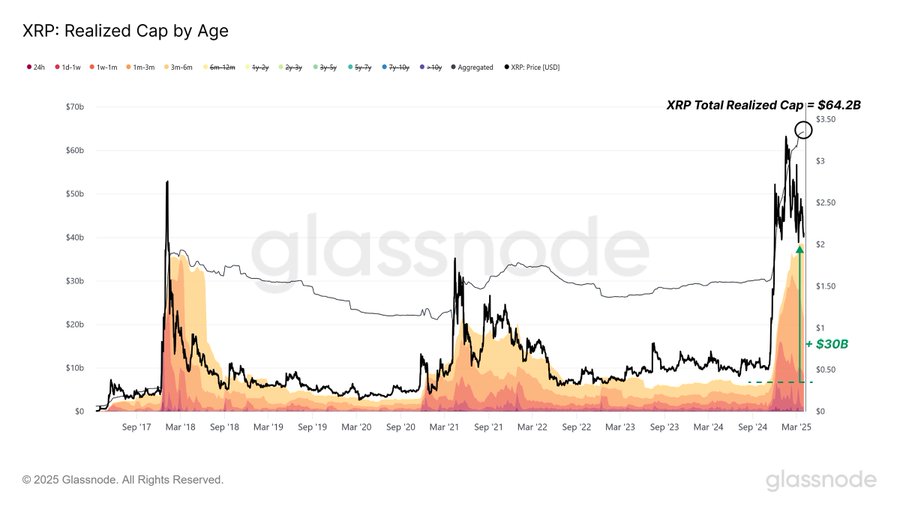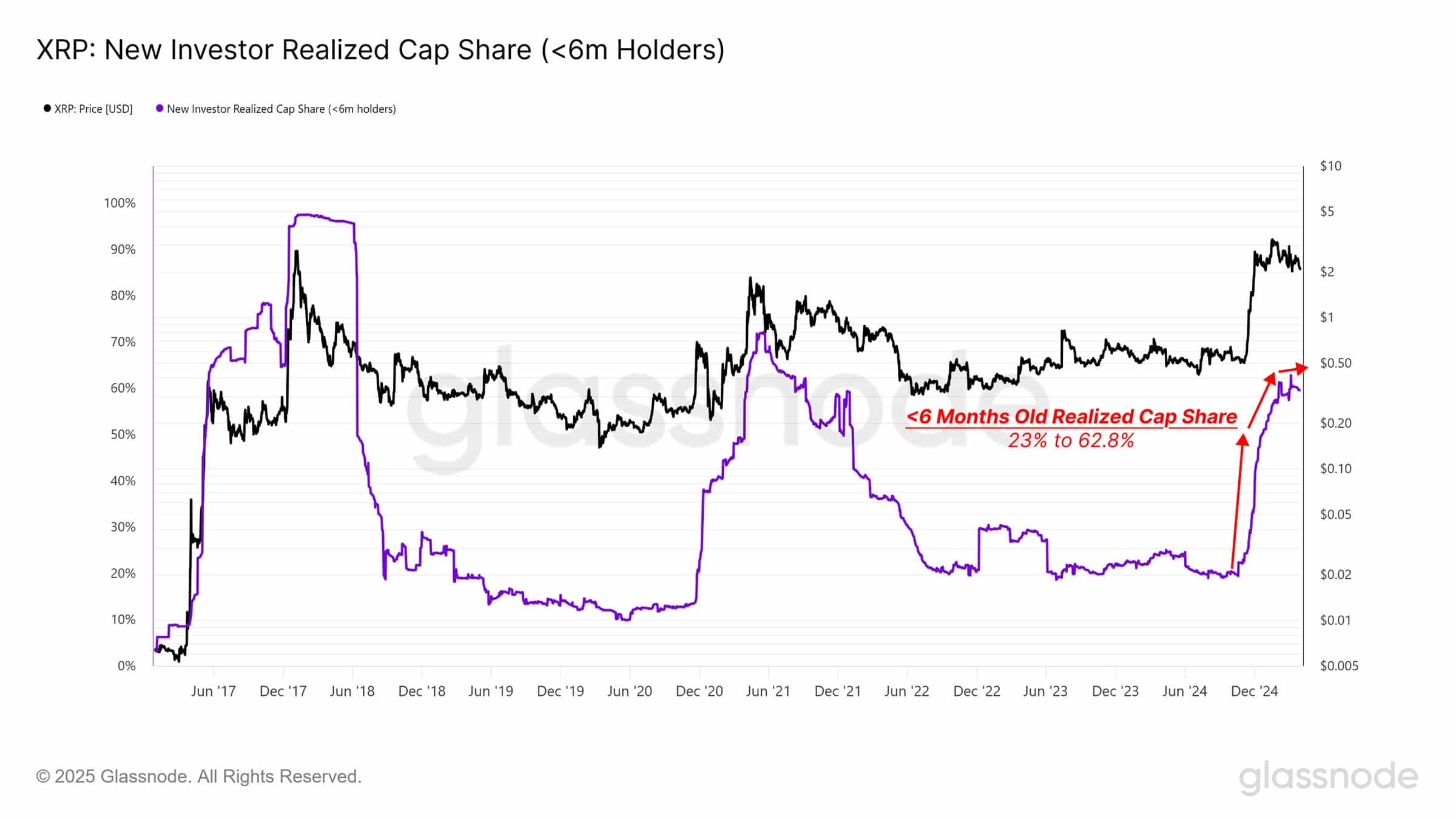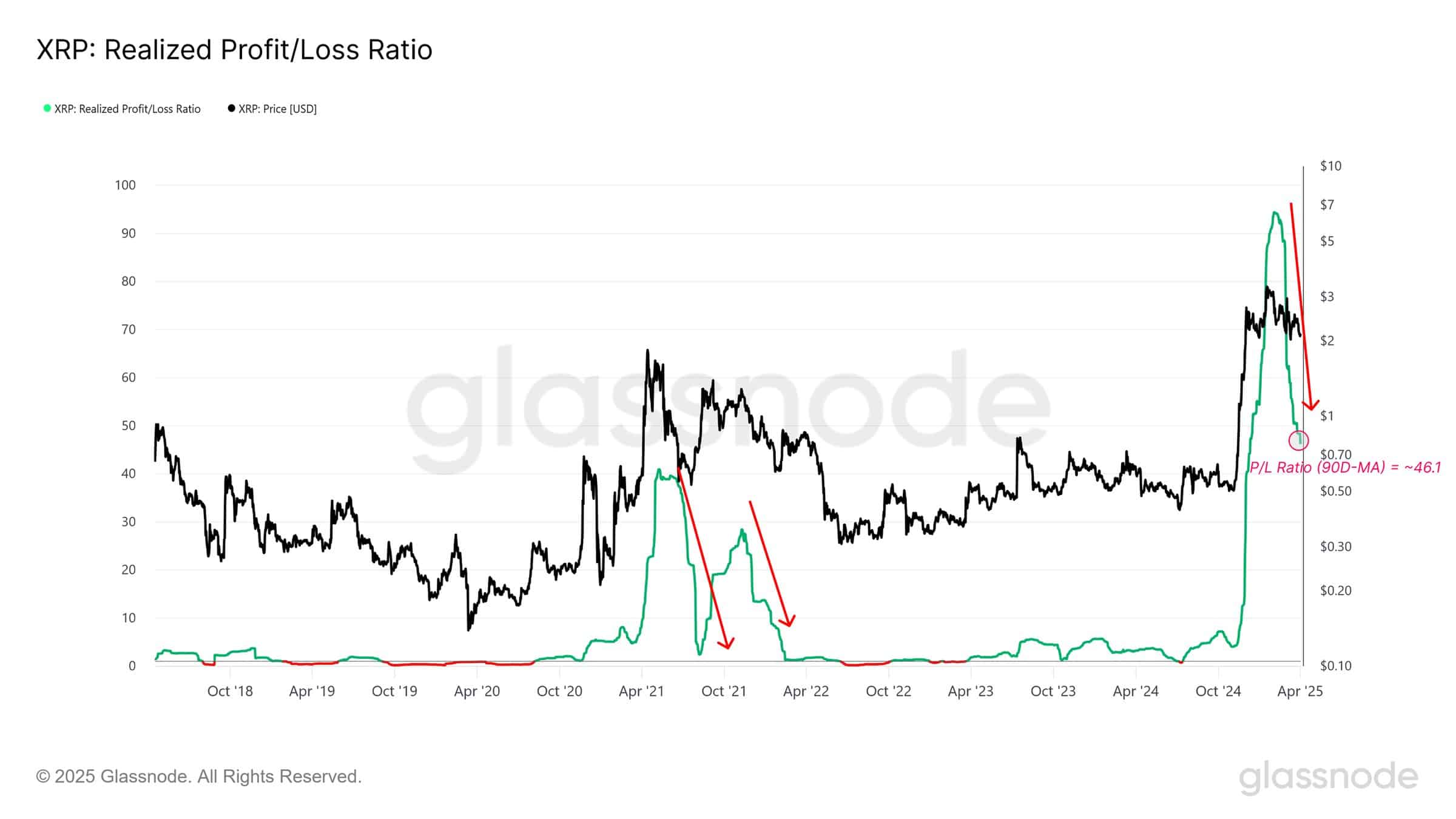-
Ripple’s XRP faces mounting pressure as the dominance of short-term holders may signal increased volatility in the crypto market.
-
As market conditions shift, the likelihood of sell-offs rises significantly, especially as short-term holders now control a staggering 62% of XRP’s realized cap.
-
“The last six months have seen a remarkable transformation in XRP’s holding dynamics,” noted a COINOTAG analyst, emphasizing the implications for future price stability.
Ripple’s XRP faces volatility risks as short-term holders dominate, raising concerns about potential sell-offs amidst shifting market sentiments.
XRP’s Realized Cap Surge: A Double-Edged Sword
The concept of realized cap has become central to understanding XRP’s recent price movements. The realized cap reflects the total value of XRP based on the last movement of each coin, serving as a vital measure of actual investments. In February, XRP’s realized cap soared, nearly doubling from $30.1 billion to $64.2 billion. This surge was primarily driven by a wave of retail investments, illustrating not just interest but a speculative frenzy around XRP.

Source: Glassnode
As illustrated, short-term holders have rapidly increased their footprint, ballooning from 23% to an astonishing 62.8% of the realized cap within just a few months. This pivot toward more short-term oriented investors raises alarms about XRP’s vulnerability to larger price fluctuations.
The Dynamics of Retail Investment in Crypto
The rapid ascent of retail investors in XRP is notable, with short-term holders now constituting 62.8% of the asset’s realized cap. This surge underscores a substantial influx of retail capital during periods of rising prices, specifically in February. Investors were eager to capitalize on momentum, often purchasing at elevated valuations.

Source: Glassnode
Because short-term holders (STHs) are more susceptible to price volatility, their increased presence is likely to exert significant pressure on XRP’s price dynamics. For example, in recent weeks, the proportion of newly acquired XRP surged, making the market more reactive and prone to declines if profits begin to slip.
The Profit/Loss Ratio: Market Sentiment Indicator
The profit/loss ratio is critical in gauging overall market confidence, measuring realized profits against losses. Currently, XRP’s P/L ratio has significantly decreased to a 90-day average of 46.1, indicating widespread investor losses. This decline corresponds with the growing dominance of short-term holders, thus amplifying the overall market vulnerability.

Source: Glassnode
With the majority of investors now facing losses, the risk of panic-induced sell-offs dramatically increases, heightening concerns about XRP’s stability in a fluctuating market environment.
Understanding the Downside Potential of XRP
Given that a significant portion of XRP’s supply resides with STHs, the potential for abrupt market shifts looms large. If prices witness even slight declines, this may spur immediate, fear-driven sell-offs from investors who are quick to react due to tight profit margins.
Additionally, the declining profit/loss ratio underscores the precarious nature of the current market situation. Investors already experiencing losses may trigger further volatility, especially amidst external challenges such as regulatory setbacks or market-wide downturns. In such circumstances, XRP could become increasingly susceptible to sharp price corrections, given the lack of steadfast long-term holder support.
Conclusion
In summary, Ripple’s XRP is traversing a turbulent landscape, largely influenced by the dominance of short-term holders. As their presence grows, so too does the risk of volatility and reactive sell-offs. Investors should remain vigilant in monitoring market sentiments and structural changes within the crypto ecosystem. The current environment calls for a cautious approach, balancing potential opportunities with inherent risks in this rapidly evolving market.
